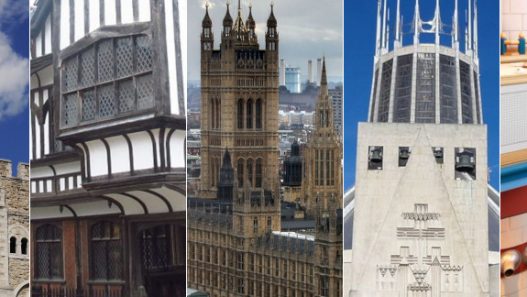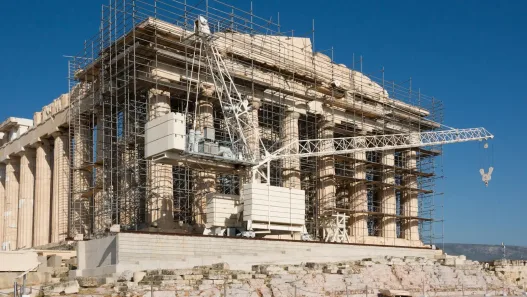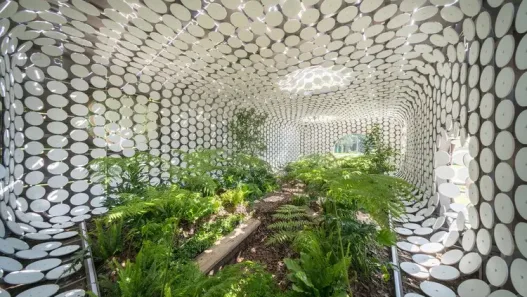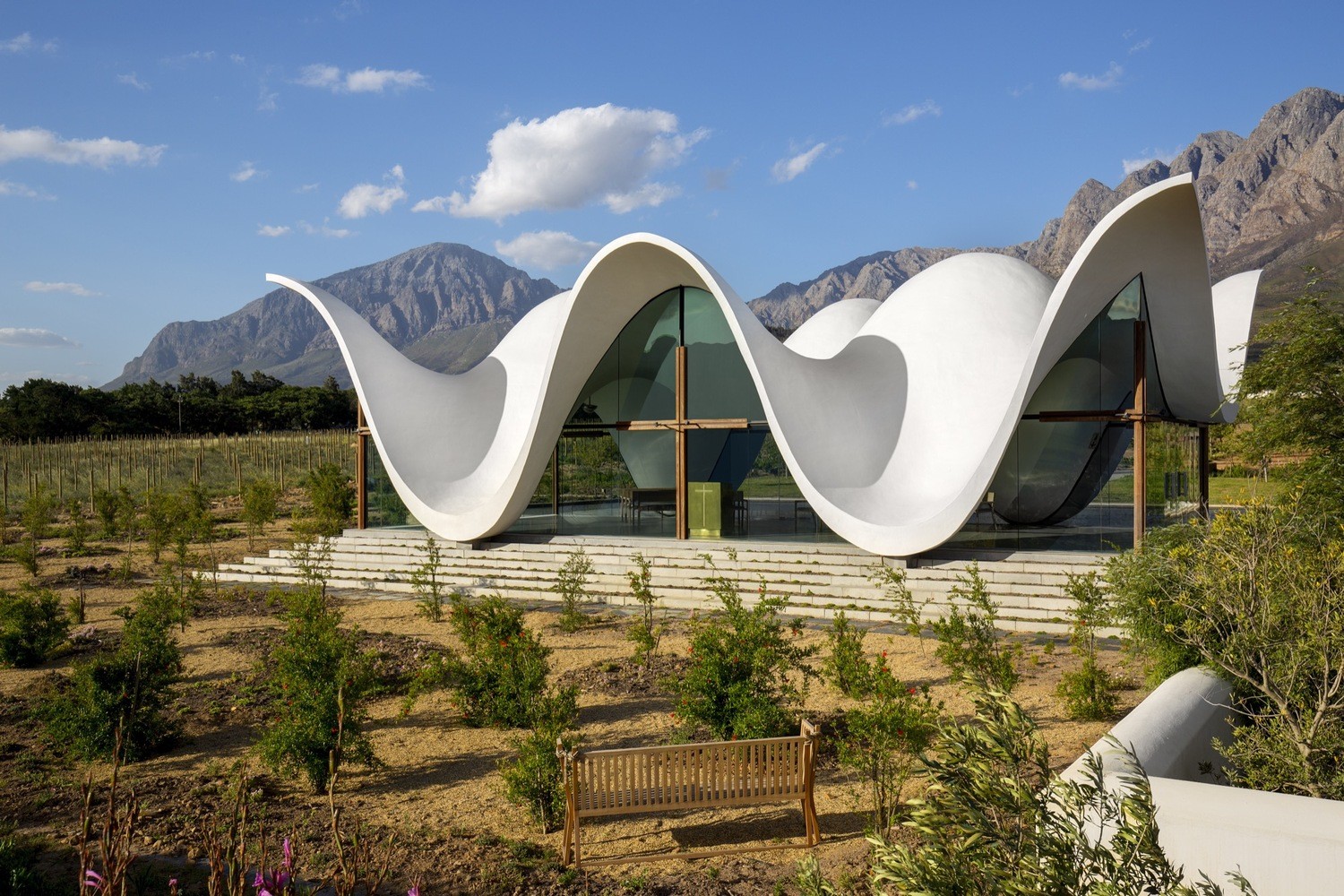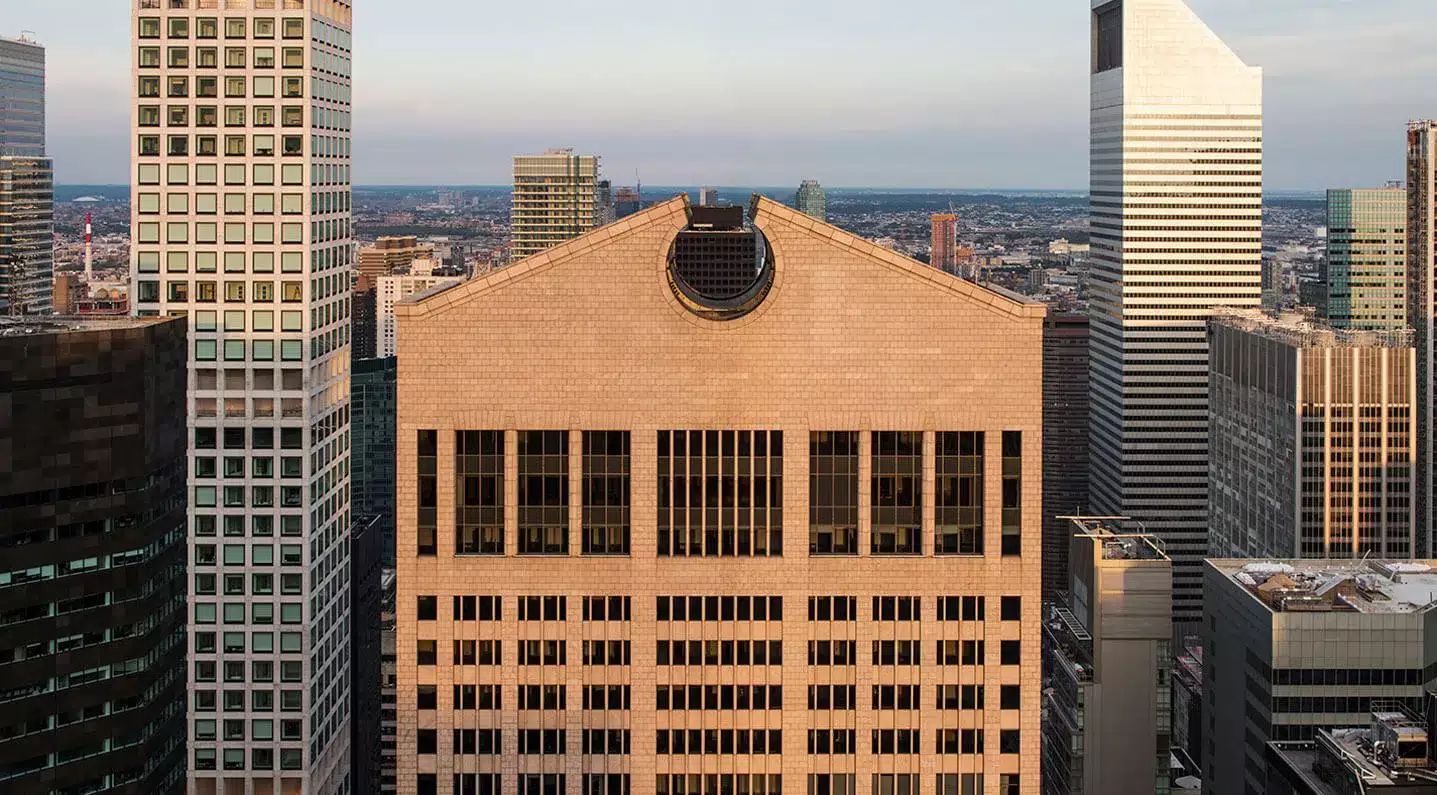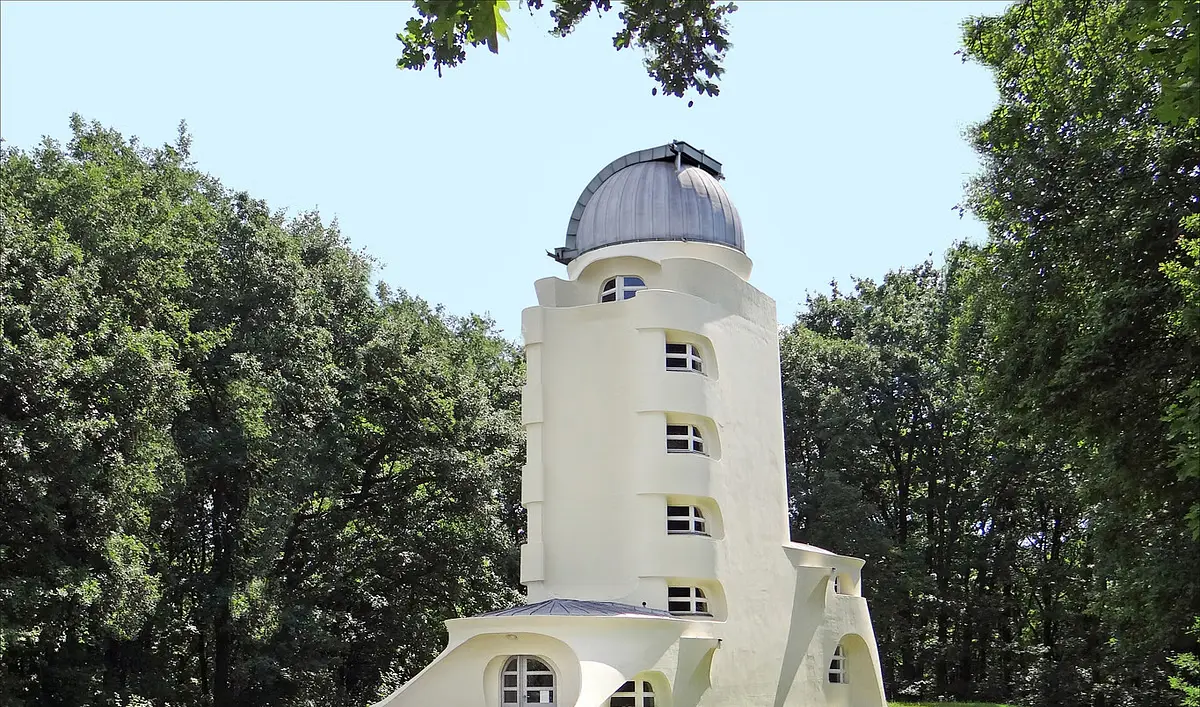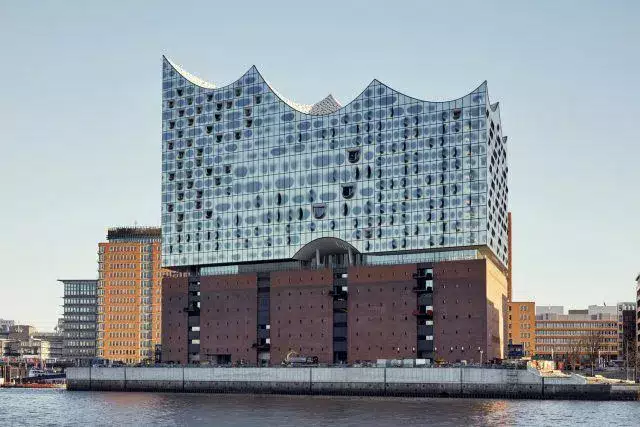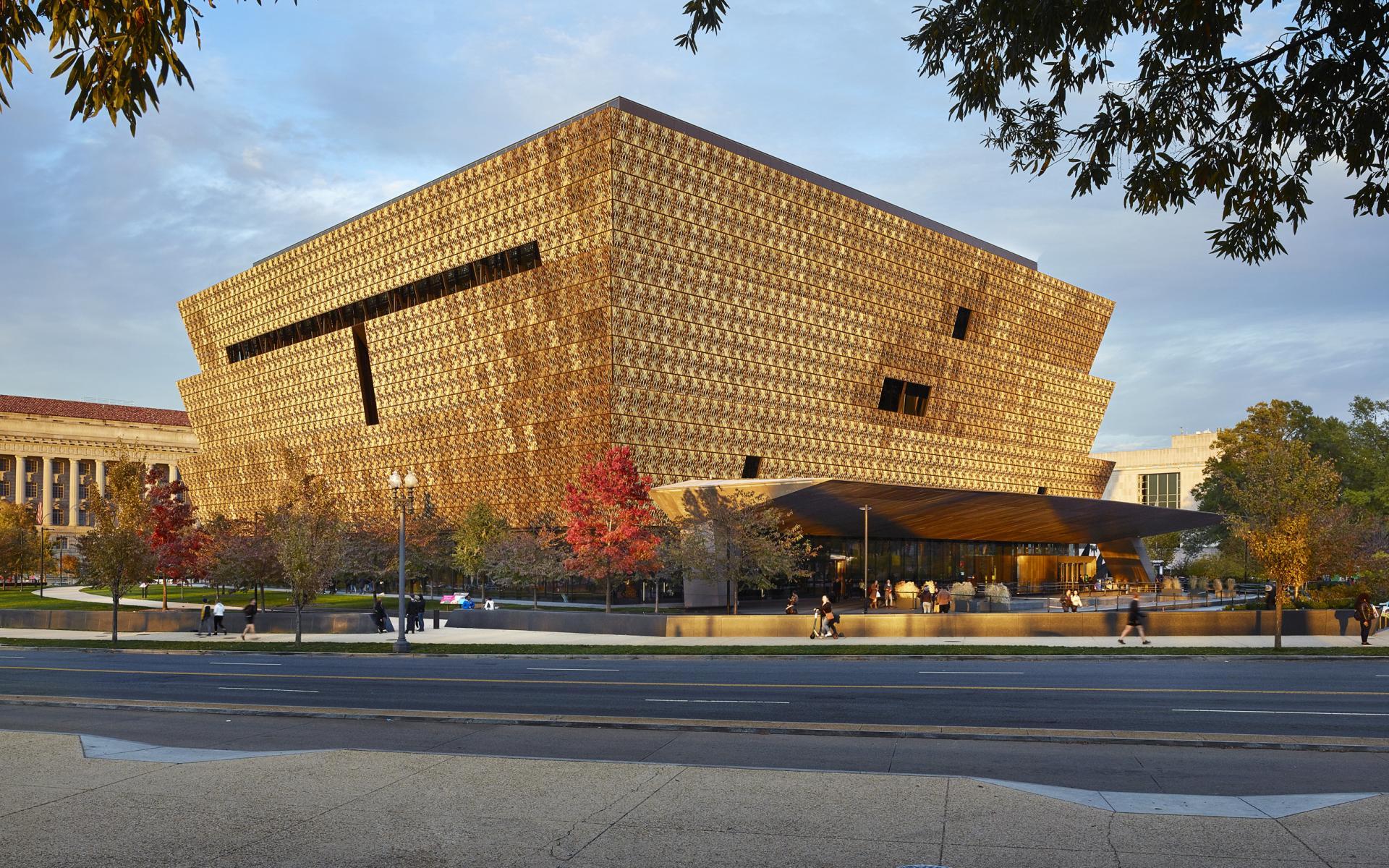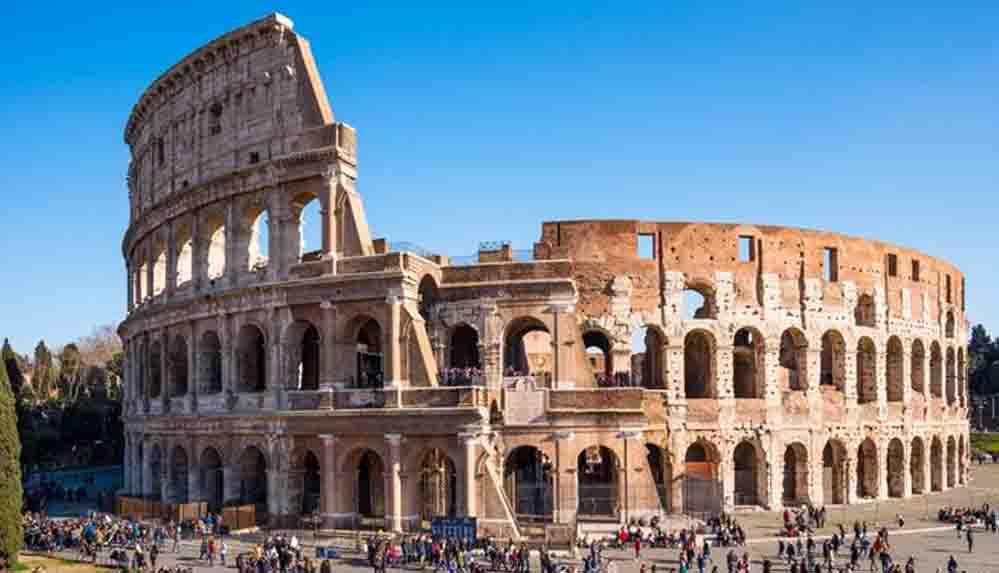Gothic architecture is a symbol of a fascinating period in the Middle Ages, reflecting the spiritual and aesthetic richness of Europe. Originating in the first half of the Middle Ages, this impressive architectural style has fascinated people throughout history with its original design and majestic structure. Gothic architecture is known for its towering cathedrals, slender arches, huge stained glass windows and intricate details. The evolution of Gothic architecture has been part of a journey from the Middle Ages to the Renaissance.
In addition to churches, it also found its place in castles, palaces and public buildings. The original features of Gothic architecture have developed and changed over time, along with advances in construction techniques. Therefore, a study of Gothic architecture means exploring not only a period, but also a broad spectrum of architectural history. Even today, the aesthetic and spiritual depth of Gothic architecture remains a source of inspiration for lovers of art and architecture.
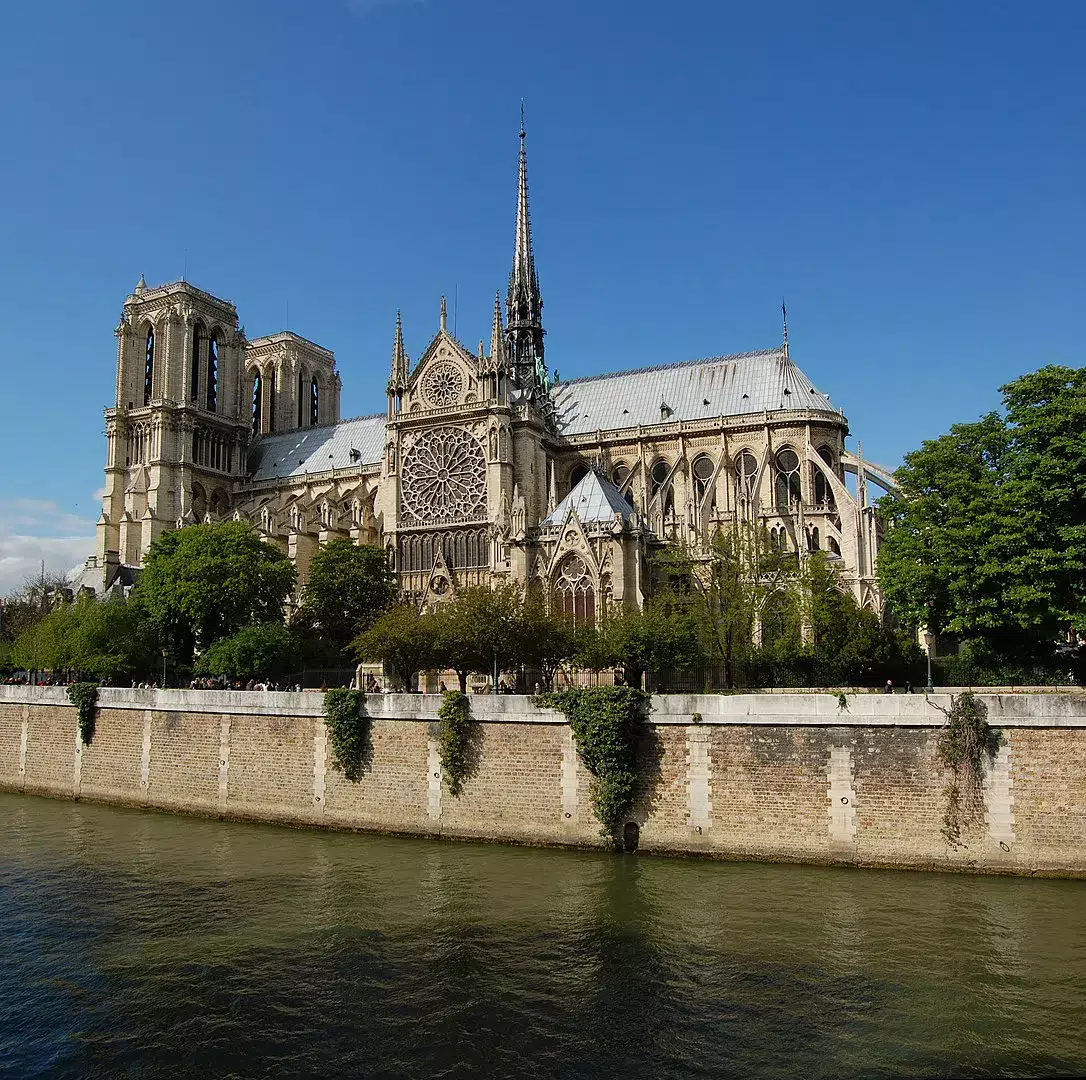
Let’s examine together the Origins and Evolution of Gothic Architecture…
Fundamentals of Gothic Architecture and Features
Gothic Architecture is an architectural style popular in Europe during the Medieval Ages (between the 12th and 16th centuries). In this section, we will examine the main characteristics and architectural elements of Gothic Architecture. Gothic Architecture has a distinctive style and has characteristic features such as high arches, slender pointed towers, stained glass windows and decorative details.
Perhaps the most striking feature of Gothic Architecture is its high arches. These arches emphasize the height of the building, creating a fascinating effect on the viewer. At the same time, slender pointed towers are another important feature of Gothic Architecture. These towers add elegance and grandeur to the architecture, while at the same time creating a feeling of reaching towards the sky.
Stained glass windows are another characteristic element of Gothic Architecture. These windows are decorated with colored glass and allow light to pour in. In this way, churches are endowed with an inner illumination and play of light. In addition, stained glass windows can contain paintings depicting religious or mythological stories.
Another important feature of Gothic Architecture is the decorative details. These details appear in the form of sculptures, reliefs and carvings that adorn architectural structures. These details of Gothic Architecture make the buildings look like a real work of art.
To summarize, the main features of Gothic Architecture include high arches, thin pointed towers, stained glass windows and decorative details. These are the elements that create the aesthetic value and fascinating effect of Gothic Architecture.
History of Gothic Architecture
Discovering how Gothic Architecture emerged in the Middle Ages, when it became popular, and which artists created works in this style, allows us to understand the history of Gothic Architecture in depth.
Gothic Architecture was born in France in the 12th century, replacing Romanesque Architecture. In contrast to the predominantly dark and heavy structures of Romanesque Architecture, Gothic Architecture consists of lighter and higher structures. This new style marks the beginning of the History of Gothic Architecture.
The spread of Gothic Architecture is particularly linked to the construction of churches. Cathedrals, churches and monasteries are the most important buildings of Gothic Architecture. With the technological developments in this period, it became possible to build large and impressive structures using thinner and higher arched vaults, durable stone structures and supporting buttresses.
During the period of Gothic Architecture, many important artists created works in this style. For example, The Basilica of Saint-Denis, Notre Dame Cathedral, contributed greatly to Gothic Architecture.
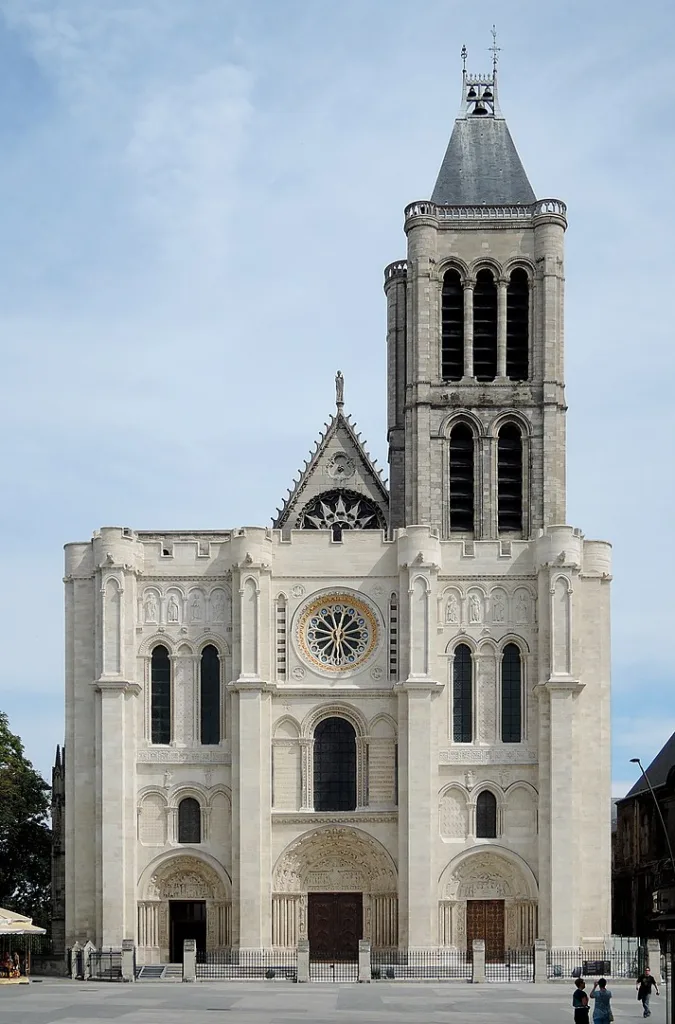

The popularity and prevalence of Gothic Architecture increased as it spread to different parts of Europe. Especially in the 13th and 14th centuries, the peak of Gothic Architecture was reached. During this period, Gothic style buildings were built in many countries of Europe and the influence of Gothic Architecture was felt.
Among the important artists of Gothic Architecture are world-renowned names such as Jean de Chelles from France, Henry Yevele from England and Antoni Gaudí from Spain. These artists reflected the characteristics and aesthetic values of Gothic Architecture in their works.
Building Techniques of Gothic Architecture
The building technique and construction methods of Gothic Architecture are awe-inspiring. This architectural style is known for its unique and complex structures. Using techniques such as high arched vaults, durable stone structures and supporting buttresses, Gothic Architecture built unique works.
The most striking feature of Gothic Architecture is its use of high arched vaults. These vaults give the building great height while at the same time providing excellent balance and stability. The engineering prowess of Gothic Architecture is revealed through the use of buttresses to reinforce the vaults. the buttresses distribute the weight of the structure, allowing the vaults to provide greater strength.
The durable stone structures of Gothic Architecture are also noteworthy. These buildings were mostly constructed using cut stones. The cut stones make the structures more robust and long-lasting. Technically, the builders of the Gothic Architecture are characterized by less use of wood and more use of stone.
Gothic Architecture skillfully combined engineering skill with building techniques and construction methods. This architectural style fascinates us with its durable and impressive structures.
| Gothic Architecture Construction Techniques | Features |
|---|---|
| High arched vaults | Provides excellent balance and stability |
| Supporting strutsSupporting strut | Strengthens vaults and provides durability |
| Durable stone structures | Enables robust and long-lasting structures |
The building techniques of Gothic Architecture form the basis for the unique and inspiring works of this architectural style. These techniques represent one of the most important milestones in architectural history and are still admired and appreciated today.
Gothic Cathedrals and Churches
In this episode, we will explore the most famous buildings of Gothic Architecture: cathedrals and churches. Gothic Architecture offers an impressive and grandiose architectural style for religious buildings. These buildings are characterized by high arches, elegant stained glass windows, slender spires and elaborate ornamentation.
Gothic cathedrals and churches were central places of religion in the Middle Ages, impressive in size, light and ritual to enhance the religious experience. These structures were designed to emphasize the power of religious faith and universal unity.
Notre Dame Cathedral
Notre Dame Cathedral in Paris, France is one of the most famous buildings of Gothic Architecture. It attracts attention with its large rosette, high vaults and decorative details. The cathedral is an original and impressive example of Gothic Architecture.

Chartres Cathedral
Chartres Cathedral in Chartres, France is one of the most important religious buildings of Gothic Architecture. It is known for its excellent stained glass windows, vaulted ceilings and fascinating details. It is among the buildings that best reflect the aesthetic values of Gothic Architecture.

Westminster Abbey
Westminster Abbey, located in London, England, is one of the most significant churches of Gothic Architecture. Serving as an important venue for coronations and royal weddings, the church shows the power and splendor of the Gothic style. Westminster Abbey is a religious and historical symbol of Gothic Architecture.
| Cathedral / Church Name | Location | Features |
|---|---|---|
| Notre Dame Cathedral | Paris, France | Large rosettes, high vaults, decorative details |
| Chartres Cathedral | Chartres, France | Excellent stained glass windows, vaulted ceilings |
| Westminster Abbey | London, England | A meaningful venue for royal weddings and coronations |
Gothic Castles and Castles
In the fascinating world of Gothic Architecture, castles and castles are among the most remarkable buildings. These buildings stand out not only for their aesthetic beauty but also for their defensive architecture. Gothic Architecture Buildings include famous examples such as Carcassonne Castle, Hohensalzburg Castle and Bran Castle.
Carcassonne Castle is located in the south of France and is a UNESCO World Heritage Site. Built in Gothic style, the castle attracts attention with its strong walls and majestic towers. As a historical defense structure, it is one of the most impressive examples of Gothic Architecture.
Hohensalzburg Castle is another example of a Gothic building in Salzburg, Austria. Set at the foot of the Alps, the castle has spectacular views from its summit and reflects the elegance of Gothic architecture.
Bran Castle is located in Romania and reflects the mystical atmosphere of Gothic Architecture. Linked to the famous Dracula legend, this castle is one of the most beautiful examples of Gothic architecture.
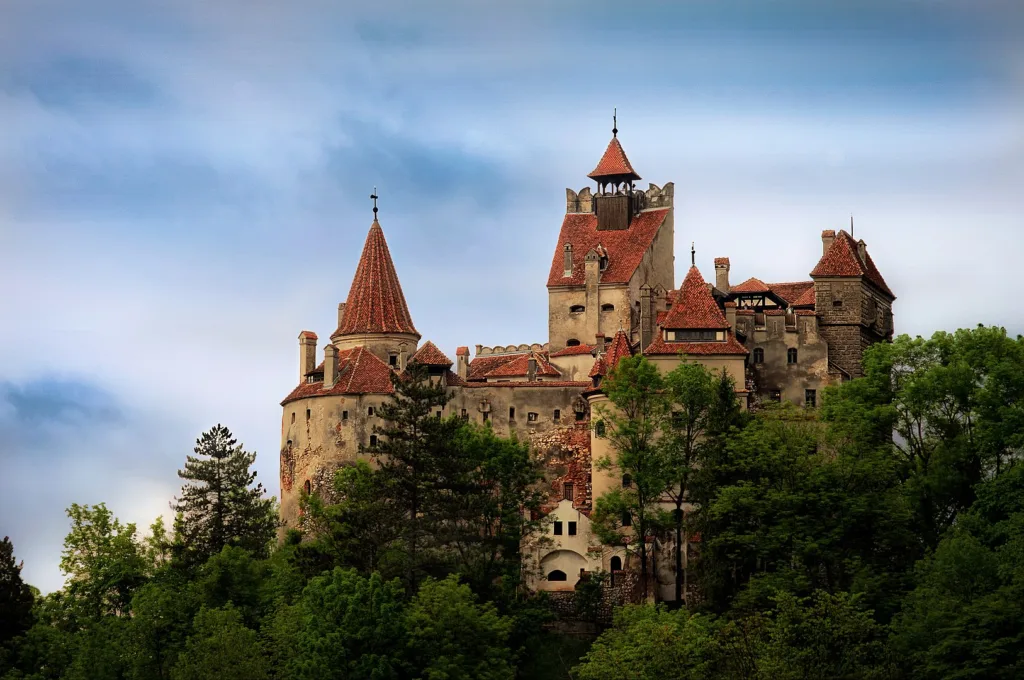
| Gothic Architecture | Country | Architectural Features |
|---|---|---|
| Carcassonne Castle | France | Strong walls, majestic towers |
| Hohensalzburg Castle | Austria | Exquisite details, impressive views |
| Bran Castle | Romania | Mystical atmosphere, Gothic detailsMystical atmosphere, Gothic detail |
Other Buildings of Gothic Architecture
In this episode, we will discover other buildings of Gothic Architecture. We will see that Gothic Architecture is not limited to churches and castles. By examining different types of buildings, we will observe the influence of Gothic architecture in different areas.
Municipal Buildings: Municipal buildings built under the influence of Gothic architecture reflect the historical and cultural values of cities. With their high arched entrance doors, painted stained glass windows and decorative ornaments, municipal buildings carry the aesthetic elements of Gothic architecture.
Palaces: The elegance and grandeur of Gothic architecture also influenced palaces. The crown gate, the elegant columns, the towers and the stained glass used in the windows show the influence of Gothic architecture on the palaces.
Trade Centers: Gothic architecture is not limited to religious and official buildings, but we can also see it in trade centers. The elegant details and the sense of height of Gothic architecture make commercial centers different and take them to another dimension.
Gothic Architecture and Urbanism
The influence of Gothic architecture on different types of buildings can be seen in many cities. Gothic architecture shapes the character and identity of cities. These buildings build a bridge between the past and the present and shed light on the history of cities.
As can be seen, it is possible to observe the effects of Gothic architecture in different types of buildings. These buildings make us feel our admiration for Gothic architecture and its fascination.
Cultural Impacts of Gothic Architecture
Gothic Architecture is an art movement that was influential in different parts of Europe and had a great impact on society at the time. The cultural impact of Gothic Architecture was not limited to the visual impact of its architectural structures, but also left a deep mark in social, religious and artistic fields.
Throughout its history, Gothic architecture has had a significant impact on the societies in the regions where it was adopted. Cathedrals, churches, castles and other Gothic buildings created a sense of national pride and identity in the societies of the period. These buildings symbolized a strong religious and cultural unity of the people, while at the same time being a means of ostentation reflecting social status.
In addition, the influence of Gothic Architecture on other art forms is also important. During the Gothic period, sculpture, painting and other handicrafts adapted to the Gothic style and formed a structure that fed each other. The detailed designs, especially in stained glass windows, also manifested itself in other art disciplines of the Gothic style.
Gothic Architecture is an important milestone in European culture.
While Gothic buildings represent the power and creativity of architectural art, they also give important clues about a society’s beliefs, aesthetics and national identity. Today, these buildings still inspire great admiration and impress visitors.
Gothic Architecture, as a historical and cultural heritage, has a great significance in terms of tourism. Gothic cathedrals and other buildings attract tourists around the world and have become a popular choice among tourist attractions. This emphasizes the important cultural and economic value of Gothic Architecture.
Modern Reflections of Gothic Architecture
Although Gothic Architecture has been under the influence of many different periods and styles throughout its history, it still continues to exist today. The influence and reinterpretation of the Gothic style on modern architecture can be seen in many buildings today. The Gothic Architectural Style has been used impressively in the design of some buildings in particular, and these buildings offer an eye-catching and impressive aesthetic.
Modern reflections of the Gothic style typically emphasize the characteristic features of Gothic Architecture. Buildings constructed in this style incorporate Gothic elements such as high arches, slender pointed towers, stained glass windows and ornate details. However, these elements have been reinterpreted in accordance with modern architecture and transformed into original designs.



The influence of the Gothic style on modern architecture is evident in the exterior and interior of buildings. High arched vaults and decorative details give depth and mobility to the buildings. Stained glass windows add a magnificent play of light and color to the interiors. In this way, the Gothic architectural style still represents a fascinating aesthetic today.
The influence of the Gothic style on modern architecture is not limited to buildings. The atmosphere and traces of Gothic Architecture also interact with sculpture, painting and other art disciplines. Especially the dark and mysterious atmosphere of Gothic art is often used in literature and cinema.
Örnekler
| Structure | Region |
|---|---|
| St Patrick’s Cathedral | New York, USA |
| Hallgrims Church in Kilisesi | Reykjavik, Iceland |
| Cologne Cathedral | Cologne, Germany |
Aesthetic Values of Gothic Architecture
To study the aesthetic values of Gothic Architecture is to take a journey through the majestic buildings and stylistic features of this period. The aesthetic values of Gothic Architecture fascinate us with the sense of height, the play of light and ornate details.
Sense of Height
The most striking feature of Gothic Architecture is known for its magnificent heights. Cathedrals and churches face the sky with incredibly high vaults and towers. This sense of height, which makes people feel small, both reflects a religious context in architecture and arouses admiration.
Light Games
Stained glass windows are an important element of Gothic Architecture that emphasizes the play of light and colors. They create a mystical atmosphere by diffusing daylight into the interior. These colored glasses give different shades of light to the space inside, telling religious stories and symbols.
Fancy Details
One of the most impressive and magnificent features of Gothic Architecture is the ornate details. Decorative elements such as triangular arches, pointed arches, rosettes, niches and pinacelles give the buildings a remarkable appearance. These patterns and figures are a form of artistic expression in architecture.
| Aesthetic Values | Description |
|---|---|
| Sense of Height | Gothic Architecture’s fascinating sense of height created by high vaults and towers. |
| Light Games | Mystical and colorful interiors created with the stained glass windows of Gothic Architecture. |
| Fancy Details | Details of Gothic architecture with triangular arches, rosettes and decorative figures. |
Gothic Architecture and Religion
Gothic Architecture, with its architectural designs, established a meaningful relationship between church and religious rituals. This architectural style aimed to provide a more impressive experience for religious events. The aesthetic features of Gothic Architecture and its use in the church emphasized the importance of religious belief.
Throughout the history of Gothic architecture, churches, cathedrals and monasteries have been important venues for the development of these religious designs. The high arched vaults, slender pointed towers and stained glass windows used in Gothic buildings helped to create a religious atmosphere. These elements also reflect the magnitude and spirituality of religious worship.
Gothic Architecture invites believers to a deeper religious experience. In the stained glass windows illuminated beneath the high arches, glimmers of divine light evoke something greater, impressively representing the presence of a divine being.

However, Gothic Architecture’s connection with churches and religious rituals does not only involve the element of architectural design. At the same time, these buildings are places where religious stories are told, sacred objects are kept and religious leaders provide guidance. Gothic churches and cathedrals became the center of religious communities.
Throughout the history of Gothic architecture, religious leaders and priests played an active role in the construction and decoration of Gothic buildings. These buildings emphasized the sublimity and greatness of religious worship and represented the power and authority of religious leaders and priests.
Gothic Architecture’s association with the church and religious rituals has supported people’s religious beliefs and spiritual pursuits. Gothic churches and cathedrals offered a spiritual connection to the faithful, enhancing the religious experience.
| Architectural Element | Detail |
|---|---|
| High Arches | It represents the greatness of faith. |
| Pointed Towers | It reflects the presence of the divine being. |
| Stained Glass Windows | It creates a spiritual atmosphere with the light and illumination of God. |
Gothic Architecture and Engineering
Gothic Architecture is not only an aesthetic feast, but also a style that has achieved great success in terms of engineering. Gothic Architecture’s fine calculations, innovative solutions and durability have led it to be considered an engineering marvel in the field of construction.
The building techniques of Gothic Architecture were planned to push the technological limits of that period. Construction techniques such as high arched vaults, durable stone structures and supporting buttresses have enabled Gothic buildings to survive for many years.
The detailed calculations used in the construction process of Gothic Architecture led to the creation of architecturally impressive and remarkable buildings. The correct proportioning and balanced placement of each element gave the buildings a sense of height and symmetry.
The innovative solutions of Gothic Architecture are also reflected in techniques such as stained glass windows. These windows not only let the light in, but also color the buildings and make the atmosphere impressive.
“Gothic Architecture can be considered a turning point in the field of engineering. This architectural style pushed the boundaries of its time and made the best use of the technological possibilities of the period.” – Professor Ahmet Yılmaz
Successful Aspects of Gothic Architecture in terms of Engineering
| Direction | Description |
|---|---|
| Fine Calculations | The correct proportioning and balanced placement of each element of the Gothic buildings ensured their visual harmony. |
| Innovative Solutions | Innovative techniques such as stained glass windows increased the aesthetic value of Gothic buildings and made them architecturally interesting. |
| Resilience | The building techniques and materials used in Gothic Architecture have enabled the buildings to survive for many years. |
Gothic Architecture is still admired today as an architectural style that has been successful in engineering. It is still a source of inspiration for engineering students and professionals.
Cultural and Touristic Value of Gothic Architecture
Gothic Architecture has contributed to the enrichment of many tourist attractions around the world with its historical and aesthetic value. The fascinating churches, cathedrals, castles and castles of Gothic Architecture built throughout history have become an important cultural and touristic attraction. If you are interested in the History of Gothic Architecture or are fascinated by the architecture, you can find some important examples of Gothic Architecture below.
Notre Dame Cathedral
Notre Dame Cathedral, the symbolic building of Paris, is one of the most famous examples of Gothic Architecture. Built in the 13th century, this magnificent structure’s high arches, mesmerizing stained glass windows and detailed carvings mesmerize visitors.
Carcassonne Castle
Located in the south of France, Carcassonne Castle represents the defensive structures of Gothic Architecture. One of the unique examples of the Middle Ages, this castle fascinates its visitors with its historical and impressive structure.
Chartres Cathedral
Chartres Cathedral, located in Chartres, France, is one of the most important temples of Gothic Architecture. The cathedral’s high arches, towers and striking stained glass windows reflect the aesthetic value of Gothic Architecture.
| Gothic Architecture Examples | Ülke |
|---|---|
| Notre Dame Cathedral | France |
| Carcassonne Castle | France |
| Chartres Cathedral | France |
As can be seen, Gothic Architecture has brought a different atmosphere and a fascinating history to tourist attractions around the world. The History of Gothic Architecture offers many valuable buildings to explore for architecture enthusiasts and tourists.
Reflections of Gothic Architecture in Literature
The impressive and dark atmosphere of Gothic architecture has made it a great source of inspiration not only in architecture but also in literature. Gothic architecture contains many of the elements that gave birth to gothic literature. Under the influence of the History of Gothic Architecture, a number of motifs and themes emerged that were used in literature to create unique atmospheres and dark stories.
Gothic literature developed from the Middle Ages until the 18th century. This genre of literature includes stories that reflect the majestic grandeur and somewhat macabre quality of Gothic architecture. The History of Gothic Architecture played a major role in the birth of gothic literature. Gothic buildings, full of high-vaulted cathedrals, dark corridors and pointed arches, formed the basis for the gothic atmosphere in literature.
Literary reflections of Gothic Architecture aim to reflect the atmosphere and emotional experience associated with these buildings. Works of literature inspired by Gothic architecture often feature magical atmospheres, mysterious characters, spaces representing the darkness and height of Gothic architecture, and supernatural elements. The aim of Gothic literature is to convey to the reader the impressive atmosphere created by Gothic architecture, to draw them into the story and to give them an emotional experience.
One of the best examples of gothic literature, Mary Shelley’s novel “Frankenstein” is an impressive example of gothic atmosphere and gothic architecture. The novel tells the story of a monster created in a gothic laboratory. Closely related to the History of Gothic Architecture, the story of Frankenstein perfectly reflects the dark and eerie atmosphere created by gothic architecture in gothic literature.
A quote from Oscar Wilde:
“Gothic Architectural History is a fascinating art form. A unique atmosphere is created in literature inspired by the gothic cathedrals of Western Europe. The imposing arches and soaring towers of Gothic architecture form the basis of the gothic atmosphere in works of literature. Every detail of every stone has the potential to tell a magical story in literature.”
The reflections of the history of Gothic architecture in literature tightly link these two art forms. The dark atmosphere of Gothic architecture inspires the birth of unique stories and unforgettable characters in literature. For this reason, the History of Gothic Architecture has played an important role in the field of literature and has taken its place among the classics of our time.
The Relationship of Gothic Art with Other Art Disciplines
Gothic Architecture is not only a structural form, but also an art movement that interacts with other art disciplines. Gothic Art, which also shows its influence in areas such as sculpture, painting and handicrafts, has developed a relationship that feeds each other.
Gothic Architecture draws attention with its close connection to sculpture. The sculptures on the stone facades of cathedrals function as a part of the architecture and add aesthetic value to the building. Detailed sculptures, especially on cathedral doors and facades, give depth and vitality to the space while also telling religious stories.
Another important component of Gothic Art is painting. The influence of architectural elements is also clearly visible in Gothic painting. Stained glass windows, especially in cathedrals, both provide a magnificent use of light and give the interiors a mystical atmosphere with the reflections of colored glass. Therefore, Gothic architecture and painting form a complementary whole.
Crafts are also an important part of Gothic Art. During the Gothic period, handicrafts such as wood carvings in churches and cathedrals, books with religious motifs and ornate church jewelry were prominent. When combined with architecture, these crafts emphasize the aesthetic value of Gothic Architecture, full of richness and detail.
Gothic Art is intertwined with fields such as sculpture, painting and handicrafts, and has developed a relationship that nourishes each other.Gothic Art is intertwined with fields such as sculpture, painting and handicrafts, and has developed a relationship that nourishes each other
This relationship led to the adoption of Gothic Art by artists in different disciplines. For example, painters of the period, influenced by Gothic Architecture, used architectural elements in paintings and produced works in Gothic style. In this way, Gothic Art enriched art by providing transitivity between different disciplines.
The Relationship between Sculpture and Architecture in Gothic Art
The art of sculpture in the Gothic period is closely linked to architecture. The large sculptures on the facades of cathedrals were conceived as part of the architecture and added religious meaning to the building. The sculptures are located on the stone facades of gothic cathedrals and tell religious stories along with architectural elements. These sculptures can be seen as open-air galleries and form an organic unity with the architecture.
The Relationship between Painting and Architecture in Gothic Art
The art of painting in the Gothic period was also intertwined with architecture. Stained glass windows in cathedrals were used to create the sacred atmosphere of the interior. The light coming into the space with the use of colored glass creates a mystical and magical atmosphere inside. This pictorial interaction shows that architecture and painting are complementary storytelling tools.
| The Relationship of Gothic Art with Other Disciplines | Art Disciplines |
|---|---|
| Sculpture | Gothic sculptures, together with the details on the cathedral facades, gave religious meaning to the architecture. |
| Image | Gothic painting intertwined with architecture and, together with stained glass windows, created a mystical atmosphere in the interiors. |
| Handicrafts | During the Gothic period, handcrafted church jewelry and wood carvings were used in combination with architecture to create aesthetic value. |
Future Influences of Gothic Architecture
Gothic Architecture is an art movement that has had a great impact throughout history. It has left a lasting mark in the world of architecture with its aesthetic values, magnificent structures and innovative building techniques. We will continue to see the effects of Gothic Architecture in the future.
The history and style of Gothic Architecture continues to be a source of inspiration among architects and designers. The amazing creativity and details of the Gothic style can be reflected in many different ways in modern architectural projects. Features of Gothic Architecture such as high arches, stained glass windows and pointed towers will become important elements that can be used in the design of future buildings.
The influence of Gothic Architecture is not limited to architecture. We see that this style is also a source of inspiration in literature, cinema and other branches of art. The atmosphere, mesmerizing beauty and mystical air of Gothic Architecture is also highly appreciated in different art disciplines. Therefore, we can say that in the future, the Gothic style will contribute to the emergence of new and interesting projects by interacting with other art forms.
The history and style of Gothic Architecture will continue to influence and inspire in the future. We believe that the aesthetic values and innovation of this important art movement will continue to play an exciting role in the creative projects and architectural world of future generations.
Frequently Asked Questions (FAQ)
What is Gothic architecture?
Gothic architecture is an architectural style that developed in Europe during the Middle Ages. Gothic architecture has distinctive features such as high arches, slender pointed towers, stained glass windows and decorative details.
When did Gothic architecture emerge?
Gothic architecture began to replace Romanesque architecture in France in the mid-12th century. However, the first buildings with the distinctive features of Gothic architecture began to be built in 1130.
Under what factors did Gothic architecture evolve?
Gothic architecture evolved with the combination of religious, economic and political factors of the period. Increasing church power, growing wealth and population, and advances in construction technology all contributed to the emergence of Gothic architecture.
Which elements are at the forefront of Gothic architecture?
High and elegant arches, pointed towers, large stained glass windows, stone carvings and decorative details are at the forefront of Gothic architecture. High vaults and durable stone structures are also important elements of Gothic architecture.
What are the most famous buildings of Gothic architecture?
Among the most famous buildings of Gothic architecture are Notre Dame Cathedral, Chartres Cathedral, Westminster Abbey, Carcassonne Castle, Hohensalzburg Castle and Bran Castle.
How was Gothic architecture built?
Gothic architecture was built using construction techniques such as high arched vaults, durable stone structures and supporting buttresses. These techniques were used to ensure the height and durability of Gothic buildings.
What is the cultural and touristic value of Gothic architecture?
Gothic architecture has significant cultural value and has become a popular choice among tourist attractions around the world. Gothic cathedrals and churches offer visitors important experiences in history, art and architecture.
Are there modern reflections of Gothic architecture?
Yes, Gothic architecture has modern reflections. Elements of the Gothic style are reinterpreted and used in today’s architectural projects and continue to influence modern buildings.
Which art disciplines are related to Gothic architecture?
Gothic architecture has a close relationship with other art disciplines. It interacted with other art forms such as sculpture, painting and handicrafts and fed each other.
What are the reflections of Gothic architecture in literature?
Gothic architecture has also influenced literature. Gothic literature is a literary genre that reflects the atmosphere and emotional intensity of Gothic architecture.
What are the future implications of Gothic architecture?
The future impact of Gothic architecture is still ongoing. The Gothic style may continue to influence current and future architectural projects, leading to different interpretations and innovations.
My Thoughts on the Origins and Evolution of Gothic Architecture
The origins and evolution of Gothic architecture is a journey that has left deep traces throughout architectural history. This style of architecture was used in the Middle Ages to construct religious buildings. Key features of Gothic architecture include towering cathedrals, slender arches and ornate stained glass. While the Gothic style remains important as a form of aesthetic and religious expression, it continues to live on as part of our historical heritage.
If you haven’t read it yet, you can also check out our review of Ephesus Ancient City – Central History…



